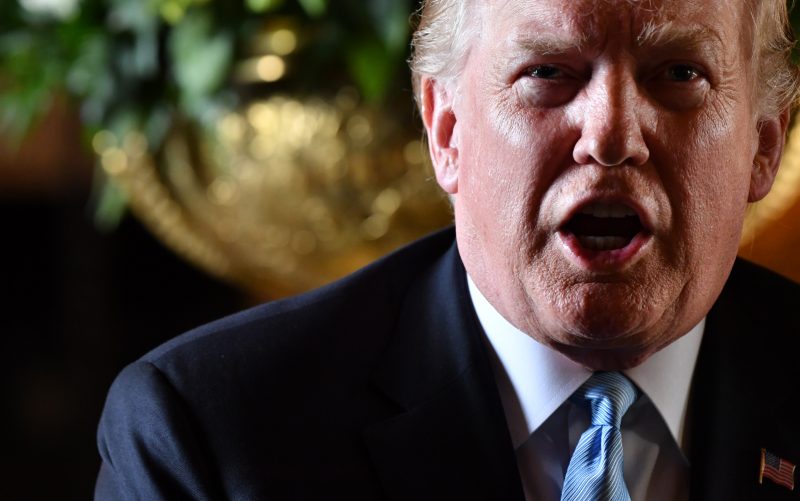Trump says trade talks with China going ‘very well’
US President Donald Trump, pictured at a news conference on March 29, 2019, agreed with Chinese leader Xi Jinping to a tariffs truce in December (Nicholas Kamm)
Washington (AFP) – President Donald Trump on Friday said negotiations to end a bruising tariffs battle with Beijing are going “very well,” but reiterated that he will only accept a “great deal.”
US and Chinese negotiators are working to find a binding agreement to address Trump’s complaints about years of unfair treatment of US companies by China, which would allow a rollback of the tariffs hitting businesses in both countries.
“The trade deal is going very well. We’ll see what happens but it’s going very well,” Trump said from his private residence in Florida, as Treasury Secretary Steven Mnuchin and US Trade Representative Robert Lighthizer headed home from the latest round of negotiations in Beijing.
But “it’s going to have to be a great deal. If it’s not a great deal, we can’t do it,” the president said.
White House economic advisory Larry Kudlow had earlier told CNBC that “we are still making great headway,” with the talks set to resume in the US capital on April 3.
And Chinese state broadcaster CCTV said the latest round yielded “new progress,” without elaborating.
The two negotiating teams, including China’s central bank chief Yi Gang, posed for pictures in front of Chinese and American flags at the conclusion of the latest round of talks, but they did not make statements to the media.
Officials are seeking to iron out major differences over US accusations that China has been using unfair trade practices for years by heavily subsidizing its companies while snatching the technological know-how of American firms.
Trump has said the two sides were close to a deal, repeatedly saying the talks are going “very well,” but officials have played down expectations of an imminent agreement.
On Thursday, Kudlow said the talks were not “time-dependent” and could last weeks or even months if necessary.
The talks are “policy and enforcement dependent,” Kudlow said.
The Chinese commerce ministry said a “large amount of work” remains to be done.
– Tariffs as ‘leverage’ –
The two sides have imposed tariffs on $360 billion in two-way trade since last year but Trump and Chinese leader Xi Jinping agreed to a truce in December to refrain from further escalation.
Trump suggested last week that some of those tariffs should stay in place even after a deal is reached to ensure China keeps its end of any bargain.
“We have to see what the track record is and we’re not going to give up our leverage,” said Kudlow.
“It doesn’t necessarily mean that all the tariffs will be kept in place, some of the tariffs will be kept there,” he told Bloomberg TV.
US insistence on keeping the first tranche of 25 percent tariffs on $50 billion worth of Chinese imports could be a sticking point for a deal, analysts say.
It is hard to predict if China will accept a deal leaving some tariffs in place, said economist Cui Fan of the University of International Business and Economics in Beijing.
The truce agreed by Xi and Trump called for “reaching a deal as soon as possible in the direction of mutually canceling the punitive tariffs slapped on by both sides,” Cui said.
Beijing has taken steps to address some US complaints, rushing through a law this month that promises to protect foreign firms from the forced transfer of technology.
It also includes language on protecting foreign companies’ commercial secrets, and fleshes out criminal penalties for officials who leak confidential information they obtain from overseas businesses.
Chinese state-owned companies also have stepped up purchases of American agricultural goods such as soybeans.
Massive purchases of American goods are expected to be part of any deal, in order to lower the politically sensitive US goods trade deficit with China, which reached a record high of $419.2 billion last year.
burs-wd/ft
Disclaimer: Validity of the above story is for 7 Days from original date of publishing. Source: AFP.


